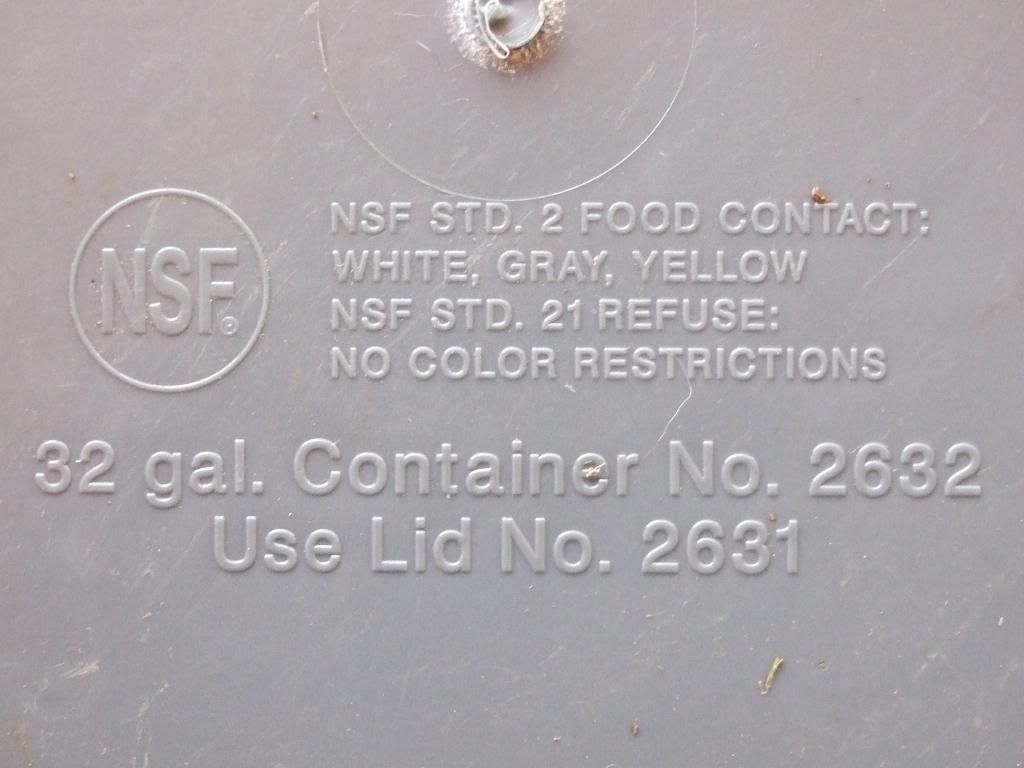OK I am looking for some input from ALL of us that use Brute trash cans for storing of RO and SW.
Many of us have been fighting all sorts of problem when using the water that has been stored in a brute container.
One repeating reported issues is HIGH PHOSPHATES.
This morning I sent an e-mail to Rubbermaid (makers of Brute cans):
This is the response:
SO... lets get some test results from everyone and see what is up with this and steer people in a better direction if this is really an issue.
It is always possible that construction or raw supply materials have changed in the construction of these items and what can be seen in some water may not be happening to all water. It may be based on a certain batch or manufacturing practices.
Please help by providing the following data:
Manufacturer
Model #
Size in Gal.
Color
HDPE marking on container? (y/n)
Date bought (month/year)
Storage (ro/NSW/USW)
Usage (storing/mixing)
Last cleaned: (month/year)
Material used to clean:
Now.... Here comes the next part.
We need to get a wider range of people to test the water that is actually stored/used in these containers.
Date:
Length of time water stored:
sg:
temp:
pH:
nitrite:
nitrate:
phosphates:
test kit(s) used:
This does not only need to be tested with Brute cans. I would like to get a comparison from others on what they are using and any test results to determine a more acceptable solution.
Thanks for your help, understanding, and support on this endeavor.
Once I get a substantial test result I will compile them into xls and post a copy for others to see.
Many of us have been fighting all sorts of problem when using the water that has been stored in a brute container.
One repeating reported issues is HIGH PHOSPHATES.
This morning I sent an e-mail to Rubbermaid (makers of Brute cans):
Within the saltwater fish hobby we have used these cans for years for mixing saltwater and holding water in general.
A few people have been noticing that the leaking of phosphates from the plastic has been reported more and more frequently.
...
This is the response:
Good Morning Larry,
Rubbermaid Commercial Products would like to thank you for your
inquiry. Per our notes on our 32 gal Brute containers - We do not test
for storage of salt water and would not recommend for this application.
Hope this is helpful.
Should you need further assistance, please feel free to contact us.
Thank you,
Michelle D
Product Resource & Tech Support
Rubbermaid Commercial Products- A Newell Rubbermaid Company
3124 Valley Avenue
Winchester, VA. 22601
Toll Free (800) 347-9800
Fax (800) 331-3291
SO... lets get some test results from everyone and see what is up with this and steer people in a better direction if this is really an issue.
It is always possible that construction or raw supply materials have changed in the construction of these items and what can be seen in some water may not be happening to all water. It may be based on a certain batch or manufacturing practices.
Please help by providing the following data:
Manufacturer
Model #
Size in Gal.
Color
HDPE marking on container? (y/n)
Date bought (month/year)
Storage (ro/NSW/USW)
Usage (storing/mixing)
Last cleaned: (month/year)
Material used to clean:
Now.... Here comes the next part.
We need to get a wider range of people to test the water that is actually stored/used in these containers.
Date:
Length of time water stored:
sg:
temp:
pH:
nitrite:
nitrate:
phosphates:
test kit(s) used:
This does not only need to be tested with Brute cans. I would like to get a comparison from others on what they are using and any test results to determine a more acceptable solution.
Thanks for your help, understanding, and support on this endeavor.
Once I get a substantial test result I will compile them into xls and post a copy for others to see.
Last edited:

